The Ultimate Curtain Fullness Guide: How Much Fabric Do You Really Need?
What exactly is curtain fullness, and why does it matter? You're out shopping for the perfect curtains and suddenly come face to face with terms like 2x or 3x, and the worry sets in. Basically, fullness is the relationship between the width of your fabric and the width of the area you’re covering. It’s what transforms your panels into a window treatment that looks professionally installed, as opposed to resembling a flat sheet that could double as a last-minute Halloween ghost costume. Understanding fullness is easier than it sounds, and once you understand the numbers, you’ll be able to achieve the perfect drape every time.
What Is Curtain Fullness? And Why Does It Matter?
Fullness is the relationship between the total width of your curtain fabric and the width of the area it covers on the rod. A higher ratio of curtain to space means more fabric is gathered or pleated into folds, creating a richer texture, a more stunning visual impact, and helping to prevent lifeless, underwhelming window treatments. Visualizing these numbers is crucial for avoiding purchase anxiety or buyer’s remorse, so we’re breaking it down for you.
1.5x Fullness: The Minimal Standard
This is often the minimally acceptable ratio to create a casual look. With this level of fullness, the drapery can appear flat or thinly stretched when closed, working best for very lightweight sheers to allow natural light while maintaining your privacy, such as our June Sheer.

2x Fullness: The Designer Sweet Spot
The 2x fullness ratio is the most commonly adhered to fullness and remains a reliable standard, giving you good body and pleating that looks professional and intentional. For instance, a classic cotton drapery with 2x fullness, such as our Aria Cotton Textured Check Pattern, achieves an immediate tailored appearance. Linen fabrics like Zen Linen or Willow Linen Pinstripe also benefit from 2x fullness to showcase their soft, natural textures and drape.

Aria Cotton Textured Check Pattern, Zen Linen & Willow Linen Pinstripe
2.5x - 3x Fullness: The Luxurious Aesthetic
Opting for 2.5x to 3x fullness creates the deepest folds that give off the feeling of incredibly lavish, high-end drapery. This density is perfect for formal spaces or when working with lightweight fabrics. Sheers layered with linen blends like Clara Neutral Linen provide the perfect amount of light diffusion, while heavier jacquard panels, such as the Sloan Jacquard Pinch Pleated, look elegant without appearing bulky.

Clara Neutral Linen & Sloan Jacquard Pinch Pleated
How Much Fullness Do You Need? Fullness Rules by Header Style
Not all curtains are created equal, and neither is the amount of fabric they need. The right fullness depends on how you envision your curtains hanging, the type of header you’ll be choosing, and the overall mood, aesthetic, or vibe your space is trying to achieve. Understanding how each header style works with fullness ratios ensures your drapes will look intentional, tailored, and balanced.
Pinch Pleat Header Style
Pinch pleat drapes require a 2x fullness minimum, with 2.5x strongly recommended. The extra fabric is necessary to produce precise, structured pleats that give this header its refined shape. Heavier fabrics like Mila Leaf Pattern Pinch Pleated or Maribel Jacquard Pinch Pleated maintain the structured look even with extra fullness.

Mila Leaf Pattern Pinch Pleated & Hazel Linen Textured
Rod Pocket Header Style
Rod pocket curtains need a 2x minimum, often actually requiring a 2.5x to 3x fullness to keep from feeling stretched thin across the rod or hardware. Fabrics like Hazel Linen Textured or Luxury Pinch Pleated drape evenly across the rod, ensuring a consistent, tailored column effect.

Grommet and Tab Top Header Styles
Grommet panels look best with 1.75x to 2.25x fullness by creating a natural wave from the ring placement. Selecting gently textured linens like Zen Linen or soft jacquard patterns like Aurelia Jacquard Floral Pinch Pleated enhances these deep waves. Tab top and back tab styles require the least fabric, typically 1.5x to 2x ratio, as these are typically already created to hold their pleats.

Aurelia Jacquard Floral Pinch Pleated & Grommet Style
The Simple Calculation: How Many Curtain Panels Do I Need?
You can determine panel count with this straightforward formula:
Total Width Needed = Coverage Width×Desired Fullness Ratio
Number of Panels = Total Width Needed/Width of One Curtain Panel
Example: You have a 60-Inch window and want 2.5x fullness with your 50-inch panels:
1. Calculate Total Fabric Width Needed:
Total Width Needed = 60 inches window width times(x) 2.5 chosen fullness = 150 inches needed
2. Determine Number of Panels:
Number of Panels = 150 inches divided by (/) 50 inches per panel = 3
You would purchase 3 panels to achieve the desired 2.5x fullness.
Steps for accuracy:
· Measure your rod’s full installed width from end bracket to end bracket.
· Round up the panel quantity to ensure enough fabric width for deep folds.
Key Considerations for a Tailored Result
Material Weight and Fullness
The weight of your fabric affects your perception of fullness. A delicate fabric like Lily Pattern Linen may need 3x fullness to create gentle, airy folds. Heavier fabrics, such as Sloan Jacquard Pinch Pleated, usually achieve a structured look with just 2x fullness.

Expert-Level Hanging Tips
· Allow for natural settling by installing drapes a half-inch above the floor to accommodate stretching.
· Prioritize 3x fullness for sheers to maximize fabric layering and light diffusion.
· Using heavier jacquard or velvet panels at 2x fullness ensures folds remain tight and uniform.
FAQ: Real Reader Questions Answered
Q: Can I use less fullness if I’m on a budget?
A: You can, as 1.5x is the minimum, but drapes may appear less refined when closed.
Q: Does fullness matter for sheer curtains?
A: Yes, sheers often look best at 3x fullness to prevent a flimsy, thin appearance, but can be used at 1.5x for simple light filtering on a budget.
Q: How do I account for the stretching of long drapes?
A: Allow a half-inch above the floor line when installing extra-long drapes; fabric weight will naturally stretch over time.
Q: What is the proper fullness for thermal drapes?
A: A 2x ratio is ideal to enhance insulation.
Style Recap & Final Takeaway
Curtain fullness shapes how your drapes fall, how they catch the light, and how they fill the room. Fabric and header style shape the folds and overall feel of your curtains, while the right measurements and panel counts keep them looking full and layered, without sacrificing light control or privacy.
· Linen fabrics provide soft, natural folds and versatile drape
· Cotton blends offer crisp texture with moderate fullness
· Velvet and jacquard create rich, structured pleats for formal looks
· Sheers and lightweight linens maximize natural light while maintaining privacy
Explore the full Three Girls Curtains collection to see how these fabrics and styles come together in real spaces, highlighting the impact of proper fullness.
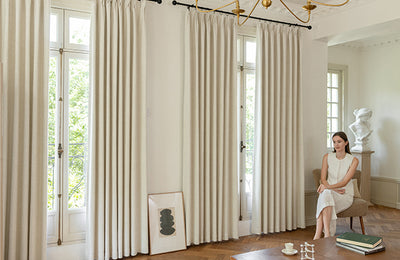
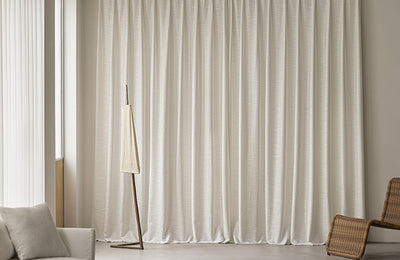
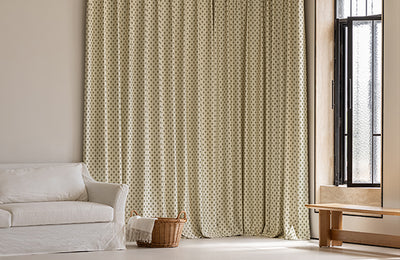




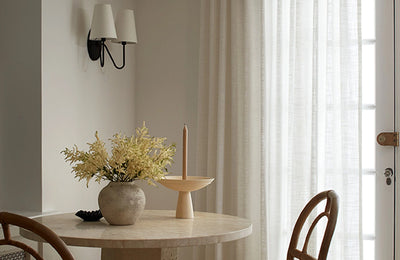
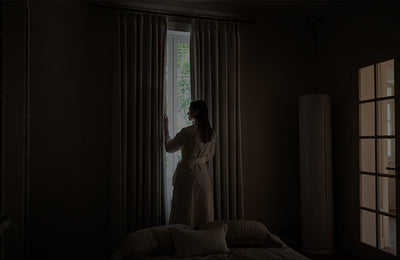

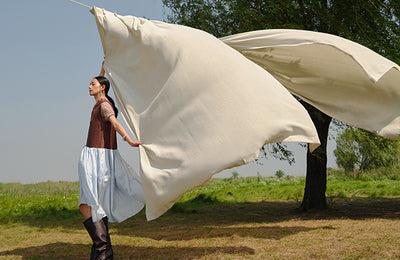
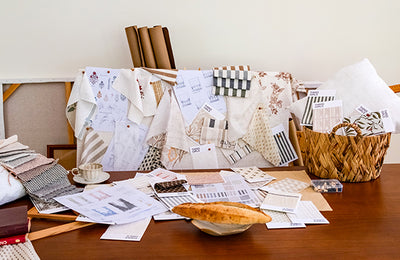
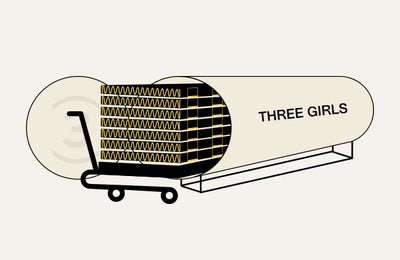



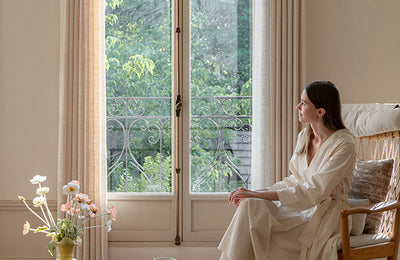


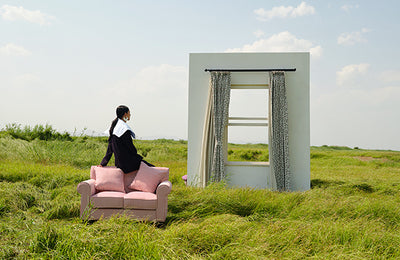

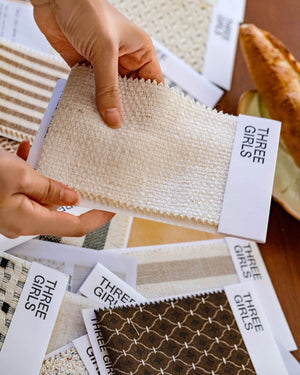


Leave a comment
All comments are moderated before being published.